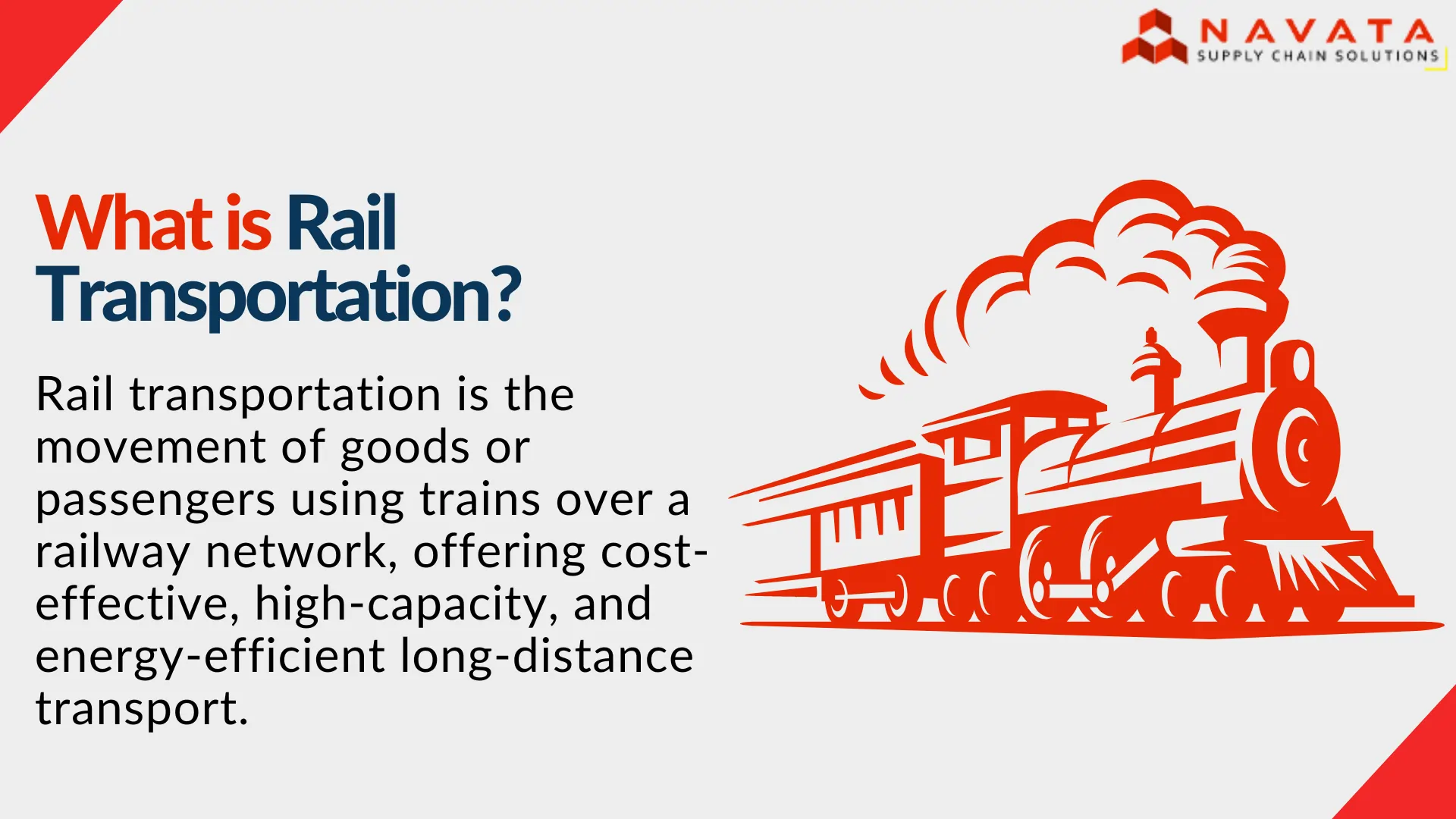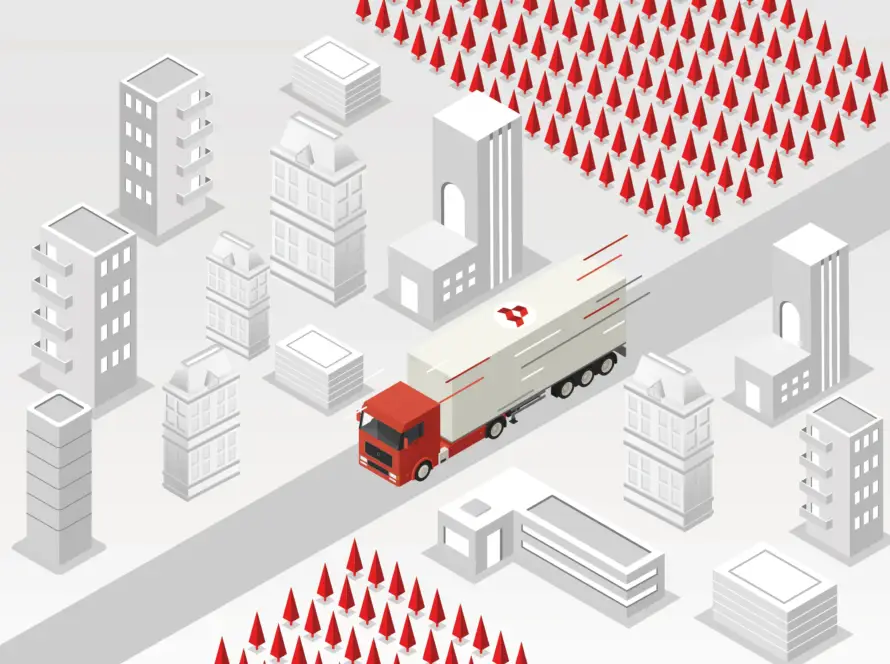Pros and Cons of Rail Transportation
Rail transportation has been the backbone of global trade and passenger mobility since the Industrial Revolution. Today, it remains a critical component of modern logistics, offering a unique blend of efficiency, sustainability, and cost-effectiveness. However, like any transport mode, it comes with limitations that businesses must consider.
This in-depth guide examines the key pros and cons of rail transportation. We’ll analyze its economic benefits, environmental impact, operational challenges, and ideal use cases to help you determine whether rail is the right choice for your shipping needs.

You May Also Like to Read: Pros and Cons of Water Transportation
Pros of Rail Transportation
Cost Efficiency for Heavy and Bulk Cargo
One train journey effectively minimizes shipping expenses for large quantities of heavy materials because of its capacity to transport extensive quantities at once. Heavy and bulk materials such as those from mining and construction and agricultural sectors find an affordable solution in this transport method. Due to the reduced number of needed trips, rail transportation represents a dependable method of shifting non-perishable bulk freight across long distances at more affordable prices.
Energy Efficiency and Environmental Benefits
The amount of fuel required by trains for each ton-mile traveled is significantly lower than for trucks, thus reducing the total emissions generated. Modern sustainability initiatives find support through electric and hybrid locomotive systems that reduce air pollution. Rail transport delivers both environmental care and operational effectiveness to businesses that strive to minimize their carbon output through its green and energy-efficient approach.
High Capacity and Reduced Road Congestion
A single freight train can carry hundreds of truckloads, easing traffic congestion on highways. This not only improves road safety but also reduces infrastructure wear and tear. Rail’s high capacity allows smoother logistics planning, especially for large-volume shipments, offering a more scalable solution compared to multiple truck dispatches.
Reliable in Challenging Conditions
The train transportation system remains unaffected by adverse weather conditions such as fog and snow, which allows for steady delivery times. Industrial companies benefit from rail transport because it provides consistent delivery times through fixed tracks and reduced disruptions caused by traffic. The reduced number of train accidents leads to increased reliability for the entire freight delivery process.
Long-Distance and Cross-Border
The rail transportation system maintains a reasonable balance between delivery expenses and travel speed for extensive freight distribution. The mode of transport delivers faster service than maritime transportation and provides more efficient solutions than aerial transportation, thus becoming optimal for both regional and cross-border logistics needs. Businesses receive efficient delivery services across widespread areas because they can transport both large and heavy loads between industrial zones and national borders.
Cons of Rail Transportation
Limited Flexibility and Access
Rail services do not offer transportation between addresses. The first and last-mile delivery stages for most freight operations depend on trucks, which extend both delivery times and expenses. Businesses that operate away from rail terminal locations encounter transportation difficulties, which diminish rail transport effectiveness for time-critical goods and perishable products that need adaptable handling.
High Infrastructure and Maintenance Costs
Heavy financial investments are essential for rail transport to establish tracks and terminals, alongside acquiring rolling stock. Building and sustaining rail infrastructure entails major financial expenses that surpass the expenses of building road infrastructure. The high financial costs restrict rail system growth in underdeveloped areas because they depend on public funding and major capital investments.
Less Efficient for Short Distances
Short-distance transport becomes more efficient with road transport because rail operations require time-consuming terminal activities. The time needed for terminal operations cancels out the cost advantages so trucks become the better choice for delivering short-distance goods and time-sensitive manufacturing products, and temperature-sensitive cargo.
Scheduling and Operational Challenges
Freight trains run on set routes and share the tracks with passenger services, which can slow down their movement. Regulations about workers plus track limitations can delay delivery progress. The scheduling and operational problems make it hard to set reliable delivery timeframes that impact how companies handle their stock and supply chain connections
Cargo Safety and Monitoring Limitations
Rail cargo experiences more theft risks and handling damages due to weak yard security. Since rail transport lacks GPS tracking, it becomes harder to track valuable or sensitive goods in real time. Businesses that focus on security and shipment tracking need better insights into their shipments because current monitoring methods do not provide them.

You May Also Like to Read: Pros and Cons of Air Transportation
Conclusion
Rail transportation continues to be a vital and cost-effective mode for long-distance and bulk freight movement, especially in a country like India with a vast and growing logistics landscape. Its environmental benefits, high capacity, and reliability make it an ideal solution for heavy industries and sustainable practices. However, limitations such as inflexible access, high infrastructure costs, and limited monitoring must be considered.
While rail cannot replace road or air transport for all scenarios, its integration into multimodal strategies enhances overall supply chain efficiency. Understanding the strengths and constraints of rail allows businesses to make informed logistics decisions tailored to their specific needs.
Thanks For Reading: Pros and Cons of Rail Transportation
Powered By 360Presence

